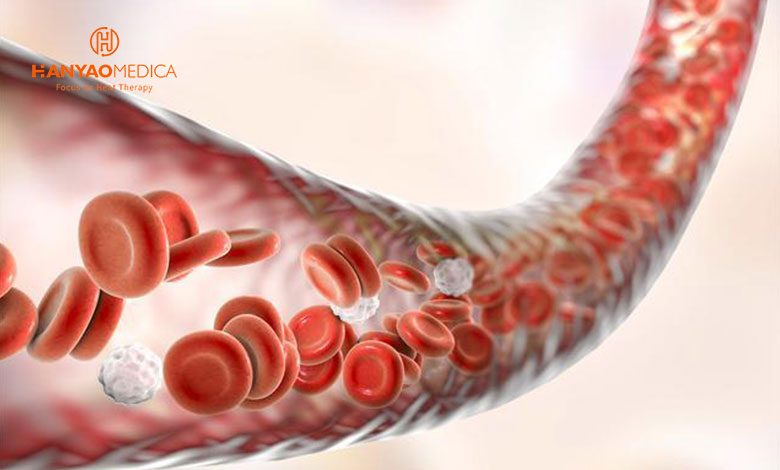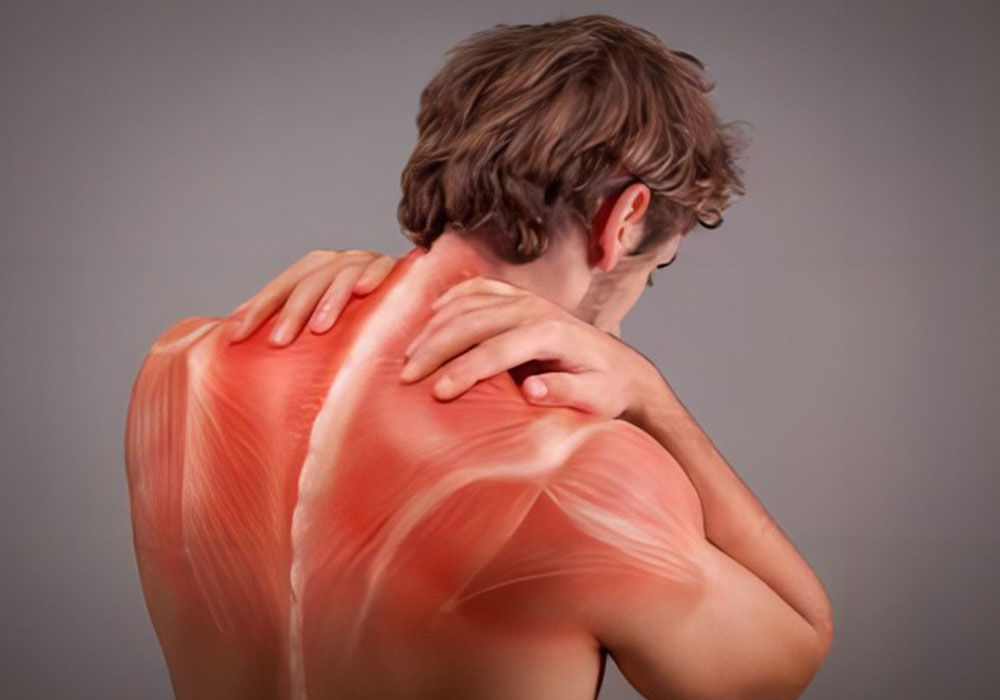I.Introduction
In daily life, when symptoms such as joint pain, muscle spasms or menstrual cramps occur, we usually use tools such as hot towels, hot water bottles, or self-heating patches to relieve pain in specific areas by releasing heat.
This is known as a heat therapy — a treatment that provides warm stimulation and comfort by applying a heat source directly to the surface of the body. It is a common type of physical therapy that produces therapeutic effects by increasing tissue temperature and promoting blood circulation.



II. Mechanism and physiological effects of Heat Therapy
2.1 How do Heat Therapy work by increasing blood flow and promoting muscle relaxation?
2.1.1 Increases blood flow:
Heat Therapy cause peripheral blood vessels to dilate, which is called vasodilation. When the heat source comes into contact with the skin, the increase in temperature causes the blood vessels to dilate, increasing the amount of blood flowing to the area where the heat is compressed.
Vasodilation improves blood circulation, increases the supply of oxygen and nutrients, and helps eliminate metabolites. This helps to facilitate the tissue repair and rehabilitation process.


2.1.2 Promotes muscle relaxation:
Heat Therapy can promote muscle relaxation and reduce muscle tension and cramping. The application of heat sources can increase the temperature of tissues, which in turn affects the activity of nerve endings.
Warm stimulation inhibits muscle contraction by affecting nerve transmission and regulating muscle tone. This helps to reduce muscle spasms and improve muscle flexibility and range of motion.
2.2 What are the effects of Heat Therapy on blood circulation, pain perception, and tissue repair?
2.2.1 Blood circulation: Heat Therapy can dilate blood vessels and promote blood circulation. When local tissues are warmed, blood vessels dilate, increasing blood flow to the area, increasing the supply of oxygen and nutrients. This helps to speed up the removal of waste and promote tissue repair and rehabilitation.
2.2.2 Pain perception: Heat Therapy can reduce pain perception. By stimulating heat-sensitive nerve endings, Heat Therapy can inhibit the activity of neurons that transmit pain signals. In addition, Heat Therapy can also promote the release of endogenous pain-relieving substances, such as endorphins, which can reduce the sensation of pain.
2.2.3 Tissue repair: Heat Therapy can promote tissue repair and healing. Heat Therapy can increase local blood flow, providing enough oxygen and nutrients to support cell metabolism and tissue repair processes. In addition, Heat Therapy can also promote collagen production, accelerate wound healing and tissue regeneration.
2.3. The relaxing effect of Heat Therapy on the nervous system
2.3.1 Reduce nerve impulses: Heat Therapy can reduce the transmission speed of nerve impulses, thereby reducing the excitability of the nervous system. This reduces the activity of neurons and makes the nervous system more relaxed.
2.3.2 Relax muscles: Heat Therapy can promote muscle relaxation. When muscles are warmed, the increase in temperature can promote blood circulation, increase the supply of oxygen and nutrients, and accelerate the removal of waste products. This can reduce muscle tension and spasms, which can help relax tense muscles.
2.3.3 Pain relief: Heat Therapy can reduce the perception of pain by the nervous system. By stimulating heat-sensitive nerve endings, Heat Therapy can inhibit the activity of neurons that transmit pain signals. This can reduce the perception of pain and make the nervous system more relaxed.
2.3.4 Relaxing mental state: Heat Therapy can also promote physical and mental relaxation by providing a feeling of warmth and comfort. The feeling of warmth can trigger the body to release endogenous relaxation responses, such as endorphins and dopamine, which can help relieve anxiety and stress.
III. Application areas of Heat Therapy
3.1 The application of Heat Therapy in different fields
3.1.1 Muscle pain: Heat Therapy can relieve muscle pain, especially due to muscle strain, muscle tension, or muscle spasms. Heat Therapy can improve blood circulation, relax tense muscles, reduce spasms, and provide a feeling of comfort.
3.1.2 Arthritis: Heat Therapy may be beneficial for people with arthritis. By providing a warm sensation, Heat Therapy can reduce the pain and stiffness caused by arthritis. Heat Therapy can also improve blood circulation around the joints, provide nutrients, reduce inflammation, and help improve joint mobility.
3.1.3 Soft Tissue Injuries: Heat Therapy can play a role in the treatment of some soft tissue injuries. For example, for injuries such as sprains, strains, muscle strains, etc., Heat Therapy can improve blood circulation, speed up the healing process, reduce pain, and help reduce swelling.
3.1.4 Menstrual cramps: Heat Therapy are widely used to relieve the discomfort of menstrual cramps. Heat Therapy can relieve symptoms of menstrual cramps by promoting blood circulation, reducing pain caused by uterine contractions, relaxing uterine muscles, and relieving menstrual cramps.

3.2 Scientific evidence supports the effectiveness and benefits of Heat Therapyin this area.
3.2.1 Muscle pain:
A study published in the journal Clinical Pain found that Heat Therapy significantly reduced pain levels and pain duration in patients with chronic muscle pain.
Another review study published in the Journal of Physical Therapy noted that Heat Therapy may reduce muscle pain by improving circulation, reducing muscle spasms, and increasing tissue elasticity.
3.2.2 Arthritis:
A study published in the Journal of Physical Therapy found that Heat Therapy could significantly reduce pain and stiffness and improve joint function in people with osteoarthritis.
Another study, published in the journal Arthritis & Rheumatology, noted that Heat Therapy can reduce arthritis symptoms by increasing joint temperature and improving blood circulation to reduce inflammation.
3.2.3 Soft Tissue Injuries:
A study published in the journal Sports Medicine found that Heat Therapy can promote the repair process for soft tissue injuries, shorten recovery time, and reduce pain and swelling.
Another study, published in the journal Clinical Sports Medicine, noted that Heat Therapy could promote the healing of soft tissue injuries by increasing blood flow and boosting cell metabolism.
3.2.4 Dysmenorrhea:
A study published in the journal Practical Pain Management found that Heat Therapy significantly reduced pain and discomfort caused by menstrual cramps and improved quality of life.
Another study, published in the Chinese Journal of Rehabilitation Medicine, noted that Heat Therapy could reduce symptoms of dysmenorrhea by relaxing uterine muscles, promoting blood circulation, and relieving uterine contractions.
IV. How to use the Heat Therapy and precautions
4.1 Protect the skin, avoid overuse and adapt to individual circumstances
4.1.1 Protect the skin: Make sure the surface of the skin is dry and clean when applying heat to reduce the risk of bacterial infection. Avoid using excessively hot temperatures to avoid skin burns or other damage. When using Heat Therapy, it is best to use a clean cloth or towel to protect the skin to prevent direct contact with hot objects.
4.1.2 Avoid overuse: While Heat Therapy can provide comfort and relief, overuse can cause adverse effects on the body. Prolonged or too frequent Heat Therapy may cause skin damage, abnormal circulation, or other discomfort. Follow proper Heat Therapy times and intervals to ensure that the skin and body have enough rest and recovery time.
4.1.3 Adaptation to individual circumstances: Everyone’s condition and sensitivity are different, so the method of applying Heat Therapy should be adapted to individual circumstances. For special populations such as children, the elderly, areas with sensory loss, and people with diabetes, it is necessary to use Heat Therapy more cautiously and under the guidance of a doctor. If discomfort or skin reaction occurs, stop using Heat Therapy immediately and consult a doctor or health care professional for advice.

4.2 Restrictions on Heat Therapy for specific diseases or symptoms
4.2.1 Inflammation or infection: If there is significant inflammation or infection, Heat Therapy may worsen symptoms or accelerate the worsening of the condition. In this case, a Heat Therapy may not be suitable for use, and a cold compress may even be needed to reduce inflammation.
4.2.2 High fever or febrile state: When the body is in a state of high fever or febrile, Heat Therapy may cause the body temperature to rise further, increasing discomfort and risk. In such cases, Heat Therapy should be avoided to avoid aggravating symptoms. Instead, other cooling measures, such as cold therapy or antipyretics, should be used.
4.2.3 Skin damage or burns: If skin lesions, ulcers, or burns are present, Heat Therapy may cause infection or worsen the injury. In such cases, Heat Therapy should be avoided and a doctor or professional should be consulted to determine the appropriate treatment.
4.2.4 Circulatory disorders or neuropathy: For patients with circulatory disorders or neuropathy, Heat Therapy may affect circulation or sensation, leading to further damage or discomfort. In this case, a doctor or professional should be consulted to determine whether a Heat Therapy is appropriate and how to use it correctly.
4.2.5 Pregnancy: During pregnancy, especially in the early stages of pregnancy, Heat Therapy may have a negative impact on the fetus. Some studies suggest that excessive or prolonged Heat Therapy may be associated with defective fetal development. During pregnancy, it is best to avoid using Heat Therapy, or use them under the guidance of a consult doctor.
V. Combination of Heat Therapy and other therapies
5.1 Combination of Heat Therapy and other treatments
Heat Therapy can be used in combination with other treatments such as cold therapy, physiotherapy and medication to provide a more comprehensive and effective therapeutic effect. The choice of this combination application will depend on the specific disease or symptom, as well as the advice of a doctor or professional. Here are some common joint application scenarios:
5.1.1 Combination of hot and cold therapy: This combination is commonly used in the management of acute trauma or inflammation. cold therapy can reduce inflammation and swelling, while Heat Therapy can improve blood circulation and relax muscles. The general principle is to use cold therapy during the acute phase to control inflammation and swelling, followed by Heat Therapy to promote healing and soothing after the inflammation has resolved.
5.1.2 Combined application of Heat Therapy and physiotherapy: physiotherapy includes physical therapy, such as ultrasound therapy, electrotherapy, massage, etc. Heat Therapy can increase the temperature and blood flow to the tissues, thus improving the effectiveness of physiotherapy. For example, in the treatment of muscle strains or arthritis, Heat Therapy may be applied first to relax the muscles, followed by physiotherapy to relieve pain and promote healing.
5.1.3 Combination of Heat Therapy and medications: Certain conditions or symptoms may require medications to reduce pain, reduce inflammation, or treat the cause. Heat Therapy can be used as a supplement to drug treatment, increase local blood flow, and improve the penetration and absorption of drugs. For example, in the treatment of arthritis or muscle pain, a Heat Therapy can be used first to improve local blood circulation, followed by a local treatment with medication.


5.2 Integrative treatment and individualized rehabilitation plans are important for effective management and rehabilitation of illness or symptoms.
5.2.1 Synergistic effect of integrative therapy: Integrative therapy refers to the combination of multiple treatments to achieve the best results. Diseases or symptoms are often multifaceted and involve different physical and psychological factors. A single treatment may not cover and address all problems. Integrative therapy combines multiple treatments to provide comprehensive outcomes for different aspects. For example, a combination of medications, physical therapy, psychotherapy, and lifestyle changes can improve patients’ symptoms and quality of life at different levels.
5.2.2 Individualized recovery plan: Each person’s illness or symptoms may have different causes, manifestations, and needs. Therefore, developing an individualized rehabilitation plan is essential for effective management and rehabilitation. The individualized rehabilitation plan will be designed according to the patient’s specific situation and goals, including selecting appropriate treatments, formulating appropriate rehabilitation stages and schedules, and setting reasonable goals and evaluation indicators. Individualized rehabilitation programs can better meet the needs of patients, provide customized treatment and rehabilitation programs, and improve treatment effectiveness and patient satisfaction.
VI. Conclusion
6.1 Benefits and areas of application of Heat Therapy
6.1.1 Benefits
- Relaxes muscles: Heat Therapy can improve blood circulation, relax tense muscles, and reduce muscle pain and stiffness.
b. Pain relief: Heat Therapy can stimulate nerve endings, reduce pain perception, and provide some relief for pain conditions such as chronic pain, arthritis, muscle sprains, and more.
c. Promotes healing: Heat Therapy can promote tissue repair and rehabilitation, accelerating wound healing and tissue regeneration by increasing blood flow and nutrient supply.
d. Improves circulation: Heat Therapy can dilate blood vessels, improve blood circulation, increase blood oxygen supply, and help detoxify the body and remove waste.
e. Stress Reduction and Relaxation: Heat Therapy can help reduce stress and anxiety and improve a sense of relaxation in the body and mind.
6.1.2 Areas of application
a. Muscle pain: Heat Therapy are effective in relieving muscle pain, muscle strains, muscle spasms, etc.
b. Arthritis and rheumatoid diseases: Heat Therapy can reduce joint pain and stiffness caused by arthritis and rheumatoid diseases.
c. Wounds and sprains: Heat Therapy can help with the recovery of wounds and sprains, reducing pain and swelling.
d. Menstrual pain: Heat Therapy can relieve abdominal pain and discomfort during menstruation.
e. Chronic pain management: Heat Therapy can be used for chronic pain management, such as low back pain, cervical spondylosis, etc.
6.2 When using Heat Therapy, it is important to ensure that the correct methods and precautions are followed.
6.2.1 Proper temperature: Make sure the Heat Therapy is at the right temperature and not overheated. Excessively high temperatures may cause skin burns. It is recommended to use a warm water bottle, hot towel, or disposable self-heating heater at a moderate temperature to ensure that the temperature of theHeat Therapy tool is within a comfortable range.
6.2.2 Appropriate timing: The duration of theHeat Therapy should be moderate, too long may cause damage or excessive dryness to the skin.
6.2.3 Avoid overheating: Don’t apply too many Heat Therapy in a row to avoid excessive heat and damage to your skin.
6.2.4 Individual differences: Each person may respond differently to and tolerate Heat Therapy. Therefore, the temperature and timing of the Heat Therapy are adjusted according to the individual’s needs and feelings.
6.2.5 Avoid using Heat Therapy in the acute phase: For acute trauma, inflammation, or swelling, cold therapy may be more appropriate to control inflammation and reduce swelling. In the acute phase, avoid using Heat Therapy to avoid aggravating inflammation or injury.
6.2.6 Precautions for Specific Conditions: Certain conditions or symptoms may have special precautions for applying heat. For example, patients with nerve damage, sensory impairments, or circulatory disorders need to be more cautious in the use of Heat Therapy.
6.2.7 Above all, it is best to consult the advice of a doctor or professional before using a Heat Therapy. They can give appropriate guidance based on your specific situation and ensure that the use of Heat Therapy is safe and effective.
6.3 As a common physical therapy, Heat Therapy have a wide range of applications in the medical field.
6.3.1 Heat Therapy Technique Improvements: Researchers can work on improving Heat Therapy techniques to improve their effectiveness and convenience. For example, the development of more intelligentHeat Therapy equipment can accurately control the temperature and time to adapt to different parts and needs.
6.3.2 Combination of Heat Therapy and other therapies: Heat Therapy can be combined with other treatments to enhance the effectiveness of treatment. For example, use Heat Therapy in combination with medications, physiotherapy, physiotherapy or acupuncture to explore more comprehensive treatment options.
6.3.3 Use of Heat Therapy for specific diseases and symptoms: Further research on the use of Heat Therapy for specific diseases or symptoms. For example, in areas such as chronic pain, neurological disorders, anxiety and depression, explore the potential role of Heat Therapy in the management of these diseases.
6.3.4 Mechanism research on Heat Therapy: in-depth study of the physiological and biological effects of Heat Therapy on the human body, and explore its mechanism of action. Understanding the effects of Heat Therapy on tissues, blood circulation, nervous system, and more can help to better understand their therapeutic effects.
6.3.5 Individualized Heat Therapy Treatment: IndividualizedHeat Therapy treatment plan is developed according to the characteristics and needs of the individual. By combining the individual’s physiological state, medical history, pain type and other factors, the parameters and regimens of Heat Therapy are customized to improve the efficacy and satisfaction of individualized treatment.
6.3.6 Prevention and rehabilitation of Heat Therapy: In addition to treatment, the application of Heat Therapy in disease prevention and rehabilitation is studied. For example, Heat Therapy are applied before and after exercise training to prevent sports injuries, and Heat Therapy are used during rehabilitation to promote tissue repair and rehabilitation.



